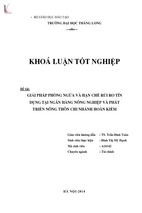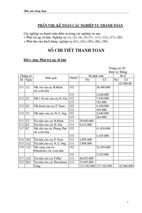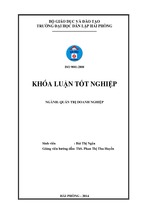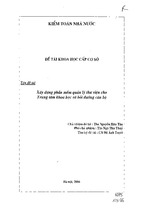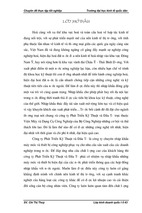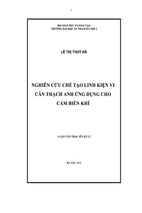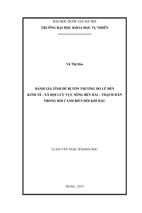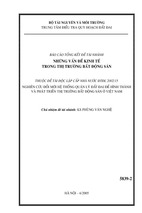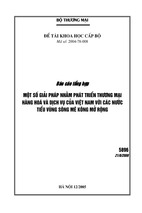Advantages and disadvantages of Augmented Reality
Augmented Reality is similar to Virtual Reality except it seeks to enhance your perception of the real
world and is not a fantasy place. No one really knows if it will live up to its expectations, or exactly
what the full potential of having it in our everyday lives will be, but one thing that is for sure is that
it is a “marketers’ dream”. The opportunities are endless; you can leave messages for friends, shops
can display offers and you can voice your opinion on certain places.
As a learning tool
Yelp, the online urban city guide that helps people find cool places to eat, shop, drink, relax, and play
based on the informed opinions of a vibrant and active community of locals in-the-know, offers an
AR app that when physically directed at a given restaurant, provides the user with ratings and
reviews before they even walk through the door.
Advantage: The New Sphere
As a result of creating Augmented Reality a new sphere has formed known as ‘The Virtual Sphere’.
This has produced a new platform for media to work with including in the Public Relations field.
New campaigns are beginning to include Augmented Reality as part of their communications
strategies. A recent campaign which has incorporated this is The Gorillaz for their new album,
“Plastic Beach”. They have promoted it in the latest edition of NME Magazine which comes complete
with an A5 booklet filled with Gorillaz information and inside is an Augmented Reality marker,
which when held up to a webcam the user is presented with a 3D “Plastic Beach” which may be
navigated around.
Source: Augmented Planet
It could be argued that interactivity of this nature works well in PR campaigns and Augmented
Reality is the next generation of interactivity with your consumers. According to Howard Rheingold,
a critic & writer in the communications industry, interactivity can create a false sense of power
which consumers strive for and this makes it worthwhile to incorporate it in PR strategies.
Advantage: Personal Experience
Once mixed with your social media applications, it can become a personal experience with
offers/coupons from shops you like and places you enjoy going to – hence a marketers’ dream. This
could prove to be highly useful to PROs when trying to reach their target market as the displays are
only perceived by a single user, raising the possibility of creating rich, personal experiences for all
occupants of a shared space. Today, people are searching, buying, rating, interacting, and using
social media in a pressure-free environment. This can give PROs new opportunities as this usage is
creating a large amount of raw, yet accurate data about consumer preference and by digesting this
information you can sift through to the people who are interested in your product or service. An
example of promoting in a more personal way is on 43things.com which is a community that allows
people to interact about the life goals they have. A popular aim is to join a gym, so naturally when
you’re up on this page advertisements for gyms appear. Although this is not an example of
Augmented Reality creating that personal experience it illustrates how it could work in the future.
Disadvantage: Privacy
Source: Social Media for Smart PeopleNevertheless, all of this causes great concern for the privacy of
its users and realistically Augmented Reality cannot come without its drawbacks. Here in the UK we
are anything but anonymous and some people are unaware of how much of their personal
information is accessible to complete strangers. Although it is not an issue for us in the UK at the
moment because very few have began to use this service, it is a big thing in Japan. However, they
have little problems with privacy as people remain very anonymous in Japan even though they have
all the social media platforms that we do (if not more), the most you could get hold of is their email
address. We seem to not have anything holding us back to uploading everything about ourselves;
where we live, who we hang around with, and even what we’re doing at the weekend. They do not
even have pictures of themselves up on their profiles in comparison to our 500 photos!
However, there are some measures to try and help us preserve our privacy. There have been some
experiments with what is known as a ‘badge’ that people can wear to “passively manage dynamic
privacy” in environments where potentially sensitive information is streamed across real and virtual
worlds. Such a device might be embedded in your mobile phone in the near future. The main
problem with privacy for PROs is that there are no clear boundaries when it comes to accessing
consumer’s personal information. The Data Protection Act (1998) is the only law that it supposed to
protect our privacy yet this is vague and open to interpretation. When it was passed 13 years ago
the internet had not become such a phenomenon.
Disadvantage: Will it ever take off?
It is all very well and good if PROs start to include this media platform in their campaign tactics
however it is not definite that it will take off in the UK like it has in Japan. It is important to
remember that part of Japanese culture is to be tech savvy and it is not part of ours. But, maybe we
are just being naive if we believe this will never take off and no one will ever use it here in the UK. It
was only 20 years ago people would have laughed in your face if you said most households will have
on average 3 computers/laptops by 2010. We can already see augmented reality being used by
companies for promotional purposes. Ford has just launched an “augmented reality outdoor
campaign to put its new C-Max model in the palm of consumers’ hands”. It will project a virtual
image of the car and allow passersby to have a go. It is claimed that it is the first outdoor campaign
to use augmented reality in the UK – and it undoubtedly won’t be the last.
Only time will tell if Augmented Reality will be a major component in every PR campaign but it is
vital that we take everything into consideration before using it frivolously. Although it may work
well in some places the UK may not be one of those and the advantages may not outweigh the
disadvantages.
TOPIC: Write an essay about 350 word to discuss the opinions expressed in the following statement,
saying why you agree or disagree:
“Working condition will be much better in the future since everything will be controlled by
computers. A lot more people will be working from home, communicating with their office and other
colleagues via their computers.”
With the advent of modern computers, people, nowadays, are not mandated to work in the office. In
contrast, they can complete their workload at home while updating the events in the company via
computers. This is gradually regarded as prevailing trend in the twenty first century. From my
perspective, I advocate the new working lifestyle for the following reasons.
Regarding the foremost factor, people can save their time to the full. It is unequivocalthat in the
past, people had to wake up early to go to the company, which nearly deprived a considerable
amount of their time, let alone the fact that some invariably had to have their contracts signed in
the foreign countries. Thus, they wasted their time on transporting. Even worse, they were not
outfitted with the time to care for themeselve and pursue their own hobbies. However, the
appearance of computers partially purges people from undesirable situations and provides them
with undeniable perquisites Now, people can stay at home without much transportation. Moreover,
they can complete quick transaction in the internet and conquer their fear of not being notified of
the important information in the company on grounds that computers have immaculate function.
Thankfully, people can spare their time on attending the family and materialise their own dreams .
What is more important is that people can ameliorate their creativity when working at home. It is
indisputable that sometimes their passion for work and creativity are buried in the company
because they continuously contend with colleague pressure or exhaustion originating from the
oppressive working environment. In attempt to disperse themeselve with the lamentable fact, they
exploit the computer to complete their work at home where refurbishes their energy and motivates
them on grounds that they are not engulfed by friction among their colleagues and do not have to
suffer from stress. In contrast, they stand a good chance of working in ideal environment which is
indicated by beautiful views encompassing their home. There they can enhance their creativity fully.
Moreover, they can work whenever they want without being forced by angry boss. Let me adduce a
concrete proof, according to Times newspaper released in 2/3/2010, after being provided with
computers to work at home, colleagues gradually reveal their excitement for work and more
creativity when executing plans. Thankfully, there was a discernible improvement in the
productivity in the company. This instance subliminally implies that working via computer at home
can preclude people from feeling topor for work and eliminating their creativity.
In conclusion, exploiting computers to work at home assists people in saving their time and inspire
the motivation to complete their work without feeling stressful. Thus, delineating computers as
saviours in their life is undoubted
Topic: The development of nuclear energy
Agree:
- As an alternative source of energy, nuclear power is expected to fulfil growing power needs in the
context that the world faces an energy crisis. (Oil and coal are anticipated to be exhausted in the
forseeable future)
- The nuclear power stations will last for a long time. Though expensive to buy, they are economic in
the long run
- Modern safety checks and procedures are strictly applied to ensure that there is never another
disaster Chernobyl.
- Burning fossil fuels is highly polluting, resulting in climatic shifts. By comparison with such
problems, nuclear power is poitively benign, producing small amounts of pollutant that can be
easily controlled.
Disagree:
- The costs of nuclear power stations are enormous, especially considering the stringent safety
regulations that must be installed to prevent disasters.
- Nuclear energy may put us at risk. Nuclear power stations are lethal time-bombs, leaving a
radioactive legacy that will out-live us for generations.
- Nuclear weapons may threaten the global political stability.
Topic 1: Abolition of examination
Agree:
- Examinations test the ability to memorise information for short periods of time, encourage
students to cram for knowledge - The pressure attached to exams is detrimental to students - For the
most part. examinations are set and taken as if students reached the same level of understanding at
the same age. This is not true - Tests in multiple choice format can only differentiate between right
and wrong answers, fail to judge the right thought process in reaching the answer
Disagree:
- Any exam will evaluate the ability of students, its limitations can be improved by combining with
other means of evaluation. - Pressure is a fact of working life and needs to be prepared and tested. The abolition of exam may destroy learning motivation of some students.
Topic 2: Censorship of the Internet
Agree: - The particular nature of the Internet may allow the mass distribution of pernicious
materials - A handy tool for terrorist as information is encoded by the sender and can only be
decoded by the intended recipient. - part of policy in some dictatorial countries - e.g China
Disagree:
- Individuals have their right to privacy, violate freedom of speech - the global nature of the Internet
may render any individual country's effort to censor it meaningless - result in the loss of harmless
sites.
Topic 3: The promotion of international travel
Agree:
- major source of income
- provide a driving force for cultural conservation, save local culture from dying out
- the pleasant feeling of experiencing unique traditions and planimetric scenes
Disagree:
- Commercialization may lead to the destruction of cultural identities - spoil natural landscape
(noise, waste etc) - invasion of exotic cultures - barriers between locals and foreign vistors:
language, unit of measurement, behaviours, customs etc - travel - related crime
Bây giờ giả sử có 50% sốố học sinh nam và 10 % sốố học sinh nữ đ ọc ti ểu thuyếốt khi đó ta có th ể so
sánh sốố liệu như sau:
- While 50% of males read novels, only 10% of female students claim to do so.
- 50% of males are reported to read novels. By contrast, 10% of female students claim to do so.
- While 50% of male students read novels, the figure given for female counterparts is 10% only.
- Male students read more novels than female counterparts by a substantial margin of 40%
- The chart reflects the dominance of males over females when it comes to reading novels, with data
recorded 50% and 10% respectively.
- When it comes to/As regards novels, the difference is pronounced with 50 percent of male
students reading novels, as opposed to 10 percent of females.
- When it comes to/As regards novels, 50 percent of male students are recorded to read comics,
compared to 10 percent of females.
- When it comes to/As regards novels, male students are far ahead of females, 50% for the former
and 10% for the latter.
I. Vocabulary for the Introduction Part:
The given / The supplied / The presented / The shown / The provided + diagram / table / figure /
illustration / graph / figure / chart / flow chart / picture/ presentation/ pie chart / bar graph/ line
graph / table data/ data / information + shows / represents / depicts / illustrates / presents/
gives / provides / describes / compares/ shows / figures / gives data on / gives information on/
presents information about/ shows data about + the comparison of …., the differences …., the
number of …., information on …., data on …., the proportion of…., the amount of ….
Example :
1. The provided diagram shows data on employment categories in energy producing sectors in
Europe starting from 1925 to 1985.
2. The given pie charts represent the proportion of male and female employee in 6 broad categories,
divided into manual and non-manual occupations.
3. The chart gives information on expenditures of
4 European countries on six consumer products namely Germany, Italy, Britain and France.
II. Vocabulary for the General trends Part:
In general, In common, As is presented, Generally speaking, As is observed
Example:
1. In general the employment opportunity has increased till 1970 and has dropped down afterward.
2. As is observed, the figures for imprisonment in the five mentioned countries show no overall
pattern of increase or decrease rather shows the considerable fluctuation from country to country.
3. Generally speaking, USA had far more standard life than all the other 4 mentioned countries
III. Vocabulary to show the changes:
Increase: rise / increase / go up / uplift / rocket / climb / upsurge / soar
Decrease: fall / decrease / decline / plummet / plunge / drop / reduce
Steadiness: unchanged / level out / remain constant / remain steady / plateau / remain the
same / remain stable / remain static/ a steadiness/ a plateau / a stability/ a static
Trend: an upward trend / an upward tendency / a ceiling trend/ a downward trend / a downward
tendency / a descending trend
Standability: leveled off / remained constant / remained unchanged / remained stable / prevailed
consistency / plateaued / reached a plateau / stayed uniform /immutable / leveled out
Examples:
1. The overall sale of the Company has increased by 20% at the end of the year.
2. The expenditure of the office remained constant for the last 6 months but the profit rose by almost
25%.
3. There was a 15% drop in the student enrollment of the University.
4. The population of the country remained almost the same as it was 2 years ag0
Types of changes:
Rapid change: dramatically / rapidly / sharply / quickly / hurriedly / speedily / swiftly
Moderate change: moderately / gradually / progressively / sequentially
Slight change: slightly / slowly / mildly / tediously
Rapid ups and downs : wave / fluctuate / oscillate / vacillate / palpitate/ waves / fluctuations /
oscillations / vacillations / palpitations
Example:
1. The price of the raw materials fluctuated for the first three months.
2. The graph shows the oscillations of the price of fuel from 1998 to 2002
Highest point :
peak / culminated / climax / reach a peak / hit a peak / touch the highest point / reach the vertex /
a peak / hit a vertex / get a vertex / get the highest point
Lowest point: the lowest point /the lowest mark / bottommost point / rock bottom point/
bottommost mark
Example:
1. The price of the oil reached a peak amounting $20 in February and again touched the lowest
point amounting only $10 in July.
2. Student enrollment in foreign Universities and Colleges increased dramatically hitting a peak of
over 20 thousand in 2004.
IV. Vocabulary to represent comparison in graphs:
Similar: about / almost / nearly / roughly / approximately / around / just about / very nearly /
Just over: just above / just over / just bigger / just beyond / just across
Just short: just below / just beneath / just sort / just under / just a little
Much more : well above / well above / well beyond / well across / well over
Much less well below / well under / well short / well beneath
1. instil confidence into sb: hun đúc sự tự tin cho ........
2. This corroborates my view that: Điềều này củng cốố quan đi ểm của tối rằềng
3. pale into insignificance when compared to : Kém phầền quan tr ọng khi so sánh v ới
4. drum up support: kều gọi sự ủng hộ
5. cast no doubt on the veracity of the statement = totally agree with the statement
6. It is no exaggeration to say that : Khống hềề thổi phốềng khi cho rằềng
7. There are clear justifications for : Có những lý leẽ ủng hộ cho .......... (quan đi ểm)
8. find oneself at loggerheads over = hoàn toàn khống đốềng ý v ới
9. spark controversy over : tạo sự tranh cãi
10. cultural homogeneity : thuầền nhầốt vềề vằn hóa.
22. This rationalizes why : Điếều này giải thích t ại sao
23. undergo an amazing metamorphosis from …to… : l ột xác t ừ ..... thành ....
24. a staggering/astounding number of : một con sốố đáng ng ạc nhiến là
25. a sense of national identity : bản sắốc dân t ộc
29. be on the same wavelength with : đốềng ý v ới
Topic: The best way to teach is to praise positive actions and ignore negative ones .
Write a response in which you discuss the extent to which you agree or disagree with the statement
and explain your reasoning for the position you take.
- I totally subscribe to the view that the best way to elicit positive response from students is to
appreciate their good actions.
- It is human nature that we all want to be be accepted and achieve on some level , and when people
in authority provide the feedback that we have done something well, the drive to repeat the action
that was praised is bound to be particularly strong. In other words, positive support can
substantially increase motivation and desire in students and contribute to positive achievements
- Whether the teacher should ignore undesirable actions or nor depends on certain situations.
- The decision to ignore students who are exhibiting inappropriate behaviours could only work well
in a “low-stakes” situation, or more specifically, one which is not debilitating to class efficiency or
the safety of any individual. For example, a student is too eager to be involved in a discussion and
speaks without raising her hand first.
- When the behaviour is precipitated by feelings of revenge, power or total self-worthlessness, this
methodology will likely not work. For example: bullying or cheating in exams.
- Criticism should refrain from being harsh as this might cause the learner to lose hope and interest.
Even though negative criticism proves to be a great teacher, it is only so if done in moderation.
Negative feedback and criticism, when considered in the right way would lead to betterment of the
person. It is worth bearing in mind that correcting an action does not mean that the child is scolded,
rebuked or beaten to put him on the right track. In fact, such behaviour can make the child more
stubborn and difficult to handle. Negative criticism need not be done in a harsh manner. It can be
done by making the child understand why a certain action is wrong.
Pros:
- After the age of 60, many will become less and less competent, lucid and reliable as the effects of
old age and senility set in.
- The fact that people continue to work past the normal retirement age prevents young talents from
breaking into the field, A mandatory retirement age will open up the field for young talents to come
through and solve the issue of soaring unemployment levels.
- It is unfair that some people are allowed to continue doing their job past the age of 60 while others
are not. In the interest of equality, there should be a universal mandatory retirement age.
- Workaholics need a mandatory retirement age to give them the spur to develop other sides of
themselves and broaden their lives.
Cons:
- This is a repressive and draconian measure as mandatory retirement would unnecessarily and
unjustly curtail many careers and pointlessly deprive the community the wealth of experience and
ability that older lawyers, doctors and businessmen have accumulated.
- This legislation would be an extreme measure characteristic of overbearing nanny state. We must
let individuals decide for themselves whether they wish to devote their entire life to their job or
prefer to follow other pursuits.
- The rapidly ageing population in Western countries means that a greater proportion of the
population are drawing pensions and a smaller proportion working to provide the money. A
mandatory retirement age would only make this worse.
Pros:
- “ Spare the rod and spoil the child”, especially in their formative years, before they have developed
faculties of reason and fair play to which parents can appeal, children need to be taught the
difference between right and wrong.
- The law allows parents the right of reasonable chasetisement. A short, sharp expression of force,
such as a smacking or spanking, inflict no serious or lasting damage. They should be used selectively
only after milder forms of discipline have failed
Cons:
- The use of force is barbaric and there are many other methods that should instead be used to teach
good behaviour: verbal correction, grounding, withholding of pocket money etc
- Parental use of force teach children that violence can be acceptable. Too many criminals, bullies,
and children with other behavioural disorders have been beaten as part of their upbringing.
LOW HEALTHCARE STANDARD IN DEVELOPING COUNTRIES - CAUSES AND SOLUTIONS
1. Causes
- Insufficient system resources: Economic resources are often insufficient to support provision of
healthcare services
- Inappropriate allocation of resources: the available resources are not allocated to the most
effective interventions, are geographically concentrated in large cities, and do not reach the poor
- Inadequate quality: There are major deficiencies in the quality of primary care delivered in
many developing countries. Facilities open and close irregularly; absenteeism rates of doctors and
nurses can be very high; staff can be hostile, even violent to patients; there is a lack of qualified
medical staff; misdiagnosis is not uncommon and there is inappropriate prescribing and treatment
- Constraints on the demand for healthcare: low income; prohibitive charges; travel costs;
cultural barriers to the acceptability of services; misperceptions of illness and the effectiveness of
care
2. Solutions
- Put priorities in training medical staff and modernizing facilities
- Encourage medical staff to work in rural areas, bring services closer to populations
- Health insurance coverage like pre-payment mechanisms or credit schemes can weaken the
household budget constraints on health care demand.
- Grant exemptions to the poor, for which price is a deterrent to use, for example, immunization
against infectious diseases.
- Lower the barrier of distance by reducing the price of travel for healthcare
- Introduce campaigns to promote the awareness of effective healthcare interventions among the
general public
Topic: Technological development leads to a lot of environmental issues. Some people think a simple
lifestyle can preserve the environment, while others argue that technology itself can solve it. Discuss
both sides and give your opinion.
The world is increasingly defined by and dependent on technology and is adopting more cuttingedge technologies at a breathtaking pace, notwithstanding the reality that technology can have
both desirable and unpredictable environmental consequences. In an attempt to curb the ecological
issues, some propose a simple lifestyle as effective nature protection while others maintain that the
negative impact can be reversed by the technology itself. A thorough examination of both
arguments should be conducted in order that the optimal solution is produced.
According to the former side, it is an undeniable truth that the world of nature is better preserved
with an uncomplicated living standards, which is substantiated by the virtually pristine condition of
wildlife habitat before the era of technology. Another aspect is also illustrated in the area of
transport in that the exhaust fumes emitted by modern vehicles have damaging effect on the
atmosphere, namely air pollution. Furthermore, there are several newly-invented products, though
convenient in use, detrimental to the survival of the ecosystem. To be more specific, plastic bags
have claimed thousands of marine lives since their very arrival. Given the proof related to transport,
natural habitat and technological products, there is sufficient justification for the promotion of
simple ways of life.
Their counterparts, however, express a firm belief in the practical applications of technological
advances to resolve the environmental problem, namely air quality improvement and solid waste
management. As a result of the breakneck progress in the field of technology, ultra-efficient electric
cars with networks of battery-charging stations have been introduced as environmentally-friendly
mode of transport without gas emissions, therefore reducing the level of air pollution. In addition,
other atmosphere purifying devices are also in use in many megacities with promising results. As for
solid waste treatment, the technology has revolutionized the established recycling system by a wide
range of novel techniques such as anaerobic digestion, biodrying, gasification to name but a few.
Nonetheless, from my standpoint, despite the mixed environmental impact of technology, it is not a
feasibility but a reality that technological area is a great contributor to tackling ecological issues.
Additionally, the society is so heavily dependent on technology that there seems little likelihood of
abandoning highly- sophisticated devices for the sake of nature in this technology-dominated age.
Therefore, it would be advisable for humans to exploit the tools of technology to combat the
environmental fight. In other words, the management of environmental problems is a long-term
battle in which advances in technology field could play a pivotal part if utilized wisely.
- Xem thêm -








